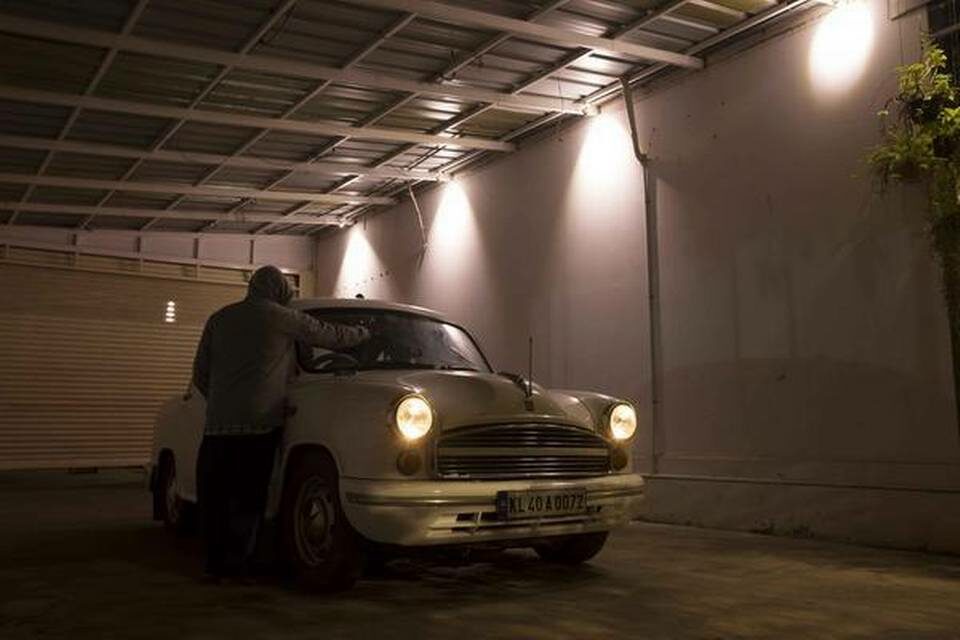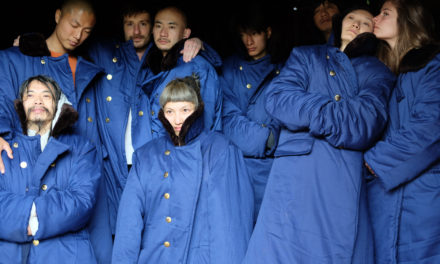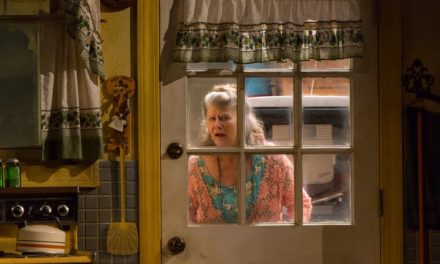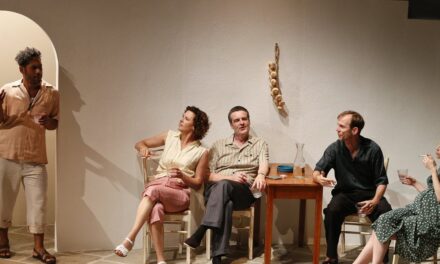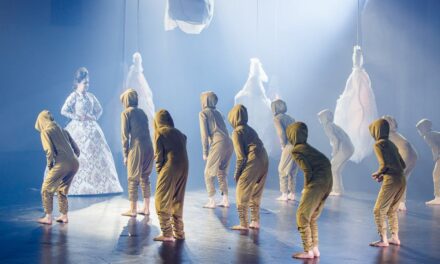Four strangers, a car and a video call make the play Bhranthu an unconventional visual experience.
You turn up to watch a play, reach the venue, meet the organizers and are introduced to other viewers. Then the director hands over a folded brochure with a ‘pappadavada’ and informs you that a car is waiting. Then you are taken in a white Ambassador car with three others for the show. The air-conditioned vehicle moves along bylanes, as a Kathakali padam plays on the stereo. A large mobile phone is conspicuous in the front seat. On the way, the car overtakes a pedestrian in a grey, hooded T-shirt.
Soon the car rolls into a garage and two hooded figures pull down the shutter, making you uncomfortable. The car moves back and forth and comes to a standstill. After some anxious moments, one of the hooded figures splatters something on the windshield. It looks like a bird dropping. Later, it’s washed away, while you’re still seated inside.
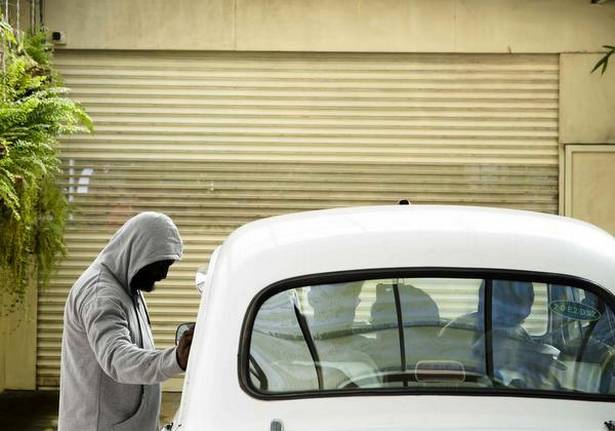
The Ambassador car in which Bhranthu is staged and one of the characters. Photo Credit: Sudheer C.
The mobile phone rings and the driver attends the call. It’s a video call. After making some small talk, the man on the screen tells you about how a group of people came to his door, asking him to accompany them for taking his sister to a mental asylum. He explains how he refused to admit that his sister was insane. You find his arguments so convincing that you forget it’s a performance that you’re watching.
The person making the video call is Kumaradas TN, the protagonist of Bhranthu (Madness)– A Mediated Performance, directed by Abheesh Sasidharan. Bhranthu is an experimental performance that explores the notion of a ‘mediated atmosphere’ and the subcultures as well as the grey areas of Kerala’s social scape. It rips apart the comfort zones within which the performances and our society exist. It can make you claustrophobic and scare you.
It is based on a short story of the same name by C Ayyappan. Each performance can have only four spectators, who sit in an Ambassador car, watching the performer (Kumaradas) through a video call. The text is presented as a monologue, rendered directly in a hyper-realistic manner that makes it difficult to believe it’s a performance. The story explores the nuances of caste as it exists in an urban middle-class society of Kerala.
“The ‘mediated atmosphere’ of this performance has three main areas, the corporeal, the temporal and the spatial aspect of the performer, the spectator, and the performance,” says Abheesh, an alumnus of the School of Drama and Fine Arts, Thrissur and the National School of Drama, New Delhi.
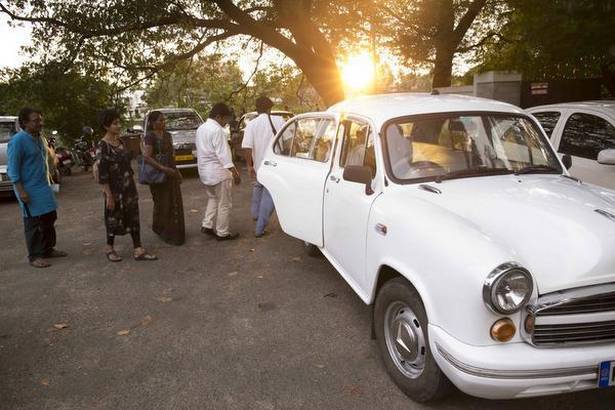
The audience getting into the Ambassador car to watch Bhranthu. Photo Credit: Sudheer C.
“In Kerala, we hardly talk about subcultures. We discuss binaries, such as high and low culture, classic or folk traditions, traditional or contemporary arts and the like. But it’s not dialectics that works here. We never address grey areas. Here, I’m trying to address these areas,” he points out. In the play, the audience can’t touch the performer. His presence is virtual. Technology is mediating his presence, through a video call. “We’re not using any technique but only technology, which is not a novelty. It does not create an illusion. So, what’s a technology beyond illusion?” Abheesh asks.
The performance ends with the audience listening to their own voices (recorded in the beginning) asking the protagonist, Ninakku bhranthano? (Are you mad). At that moment, the audience themselves becomes part of the performance. They are the people who confront the protagonist, the society to whom he is pouring out his confession and justification. A soundscape created by three female voices winds up the performance. “I chose these voices as the female characters in the story, the Mother, the Wife, the Daughter, and the Sister who never gets a face or voice. It’s an irritating soundscape. We live in an era when noise is seen as ugly; it is removed in studios to create beautiful soundscapes. Artistes who have created the soundscape are singers Resmi Sateesh and Theyya Kovippallil, a folk artiste from Kothanalloor in Kottayam, and Aswathi Rajesh, a child artiste from Ponkunnam,” the director says. Kshema Varghese, Aneesh Valancherry, Vineesh, and Sudheer C act as the Performance Collective or the hooded figures.
Bhranthu has completed 47 shows so far. Presented by Theatre Hut, it was recently staged at the River Bourne Centre, Tripunithura.
This article was originally posted at The Hindu and has been reposted with permission. To read the original article, click here.
This post was written by the author in their personal capacity.The opinions expressed in this article are the author’s own and do not reflect the view of The Theatre Times, their staff or collaborators.
This post was written by Renu Ramanath.
The views expressed here belong to the author and do not necessarily reflect our views and opinions.

